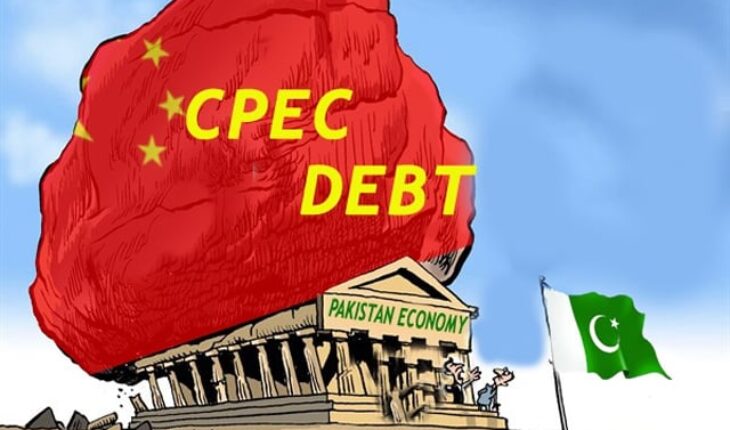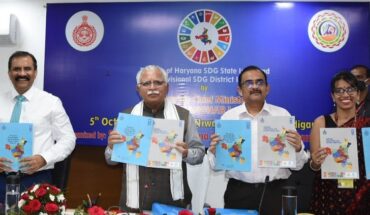
Our neighboring country Pakistan has once again proved that its economy has become accustomed to relying on foreign loans. From 1958 to the present, Pakistan has approached the IMF 23 times for foreign loans. After 1988, it sought assistance 14 times, including a notable $3 billion loan just a year ago during an economic crisis. Following extensive discussions with the International Monetary Fund (IMF) in this month, Pakistani officials were successful in convincing the IMF to release a new financial aid package of $25 billion, acknowledging the urgent need due to the country’s ongoing economic challenges. It should be noted that Pakistan’s economy has been going through the crisis of cash shortage for a long time and that is why it is in great need of foreign loan. Despite not accepting some of Pakistan’s requests, the IMF agreed to continue financial support after analyzing the country’s economic situation, adjusting the estimated economic growth rate downward to around two percent. Apart from this, the current account deficit, import data and inflation data were also not accepted by the IMF and issued a new financial assistance by reducing it by 3.4 billion US dollars.
Generally, India remains a primary focus for both Pakistan and China in their intimate friendship. However, the truth is that Pakistan’s economy is most dependent on China for foreign loans. According to the World Bank, China has provided Pakistan with approximately $40 billion in foreign loans, although the actual amount is more than 50% higher. A recent report by the prominent global research institute ‘AIDData’ confirms that China’s debt to Pakistan is around $70 billion. This report also says that Pakistan acquired almost half of this debt from China during Nawaz Sharif’s tenure from 2015 to 2017. It is also important to clarify that during Sharif’s tenure from 2013 to 2017, Pakistan borrowed a total of USD 36 billion from China, of which USD 33 billion was between 2015 and 2017. After that, whether it was the era of Imran Khan or today, Pakistan’s dependence on China for foreign debt has remained constant. During the visit of a representative of the Pakistani Prime Minister to China on October 19, when he said that Pakistan has a completely ‘blind trust’ on China, it certainly shows Pakistan’s obligation. It’s true that now Pakistan does not have any other viable options.Till now China has financially supported 433 projects in infrastructure development. Notably, from 2012 to 2021, Pakistan has annually received emergency financial assistance also from China. Emergency financial assistance is granted when a country is unable to repay a financial loan, extending the loan repayment period for 8 to 12 months. It’s evident that Pakistan’s economy has been under sustained economic pressure for quite a long time.
On a global scale, China has been attracting smaller nations with weaker economies towards itself due to its political ambitions for the past several decades. China, driven by its political aspirations, has been providing loans to these countries for infrastructure development for various purposes. According to the AidData research institute, China currently holds the highest foreign debt for Russia, amounting to approximately $169 billion. Venezuela is second with $70 billion, followed by Pakistan.After that comes Angola, Kazakhstan, Indonesia, Brazil, Argentina and Vietnam. It’s noteworthy that in the case of Argentina, China provided foreign loans in its currency because Argentina, at one point, was unable to repay the loans given by the IMF, and to avoid penalties imposed by the IMF, it sought financial assistance from China.Over the past decade, along with political ambitions, China has also nurtured the dream of becoming a rich country and due to this, it has made radical changes in its foreign debt policies. It is also being seen that China is funding itself to build various infrastructure projects in various small countries by giving foreign loans in its own currency on a condition that its loan will be repaid through projects. This will happen through a share in the profitability of the project and if the project is not profitable then the project will be mortgaged to China. Something similar was seen this year in connection with the development of Habantota Port in Sri Lanka, due to which China almost brought Sri Lanka to the brink of bankruptcy. Now, If there are hidden aspects in the loans provided by China to Pakistan, it won’t be surprising if, in the future, Pakistan’s friendship with China is contingent on terms targeting India under international diplomacy.
Pakistan was known for experiencing the fastest-growing economy in South Asia from the 1960s to the 1990s, but the current situation is entirely opposite. During that period, Pakistan’s average growth rate was around 6 percent, and while its economy achieved a GDP level of over 6 percent in more than two instances in the previous three decades, notably in 2004 and 2005. However, the International Monetary Fund (IMF) has estimated a development rate of approximately 2 percent for Pakistan’s economy in the upcoming fiscal year, raising serious concerns.The primary reason behind these challenges is a lack of innovation in economic policies over time. Currently, Pakistan ranks second in Asia for inflation figures. GDP numbers have been consistently declining over the last 10 years, annual export growth is recorded at 8 to 10 percent, and the overall growth has been only three times since the 1980s, which is quite low. In contrast, looking at India’s perspective, economic policy changes since the 1990s have resulted in a 15-fold increase in exports, and India has achieved an over 6 percent GDP level approximately 18 times during this period. Today, there is a 65 percent difference in per capita income between India and Pakistan, and as a result, India stands at a purchasing power level more than 35 percent higher than Pakistan.
It’s possible that Pakistan’s increasing dependence on China for foreign loans may seem favorable, but it should especially remember Sri Lanka’s example concerning the foreign debt obtained from China. Pakistan is rapidly following in the footsteps of Sri Lanka. Currently, approximately 43 percent of Pakistan’s GDP is attributed to foreign debt, according to recent figures. Sri Lanka, at one point, had reached 74 percent, leading to complete economic distress due to China. In contrast, foreign debt in India’s economy accounts for only around 19 percent of its GDP, despite India being the most populous country in the world.Notably, in the South Asian continent, Bangladesh has the lowest proportion of foreign debt to GDP, standing at just 11 percent. However, these days, Bangladesh is in constant touch with the IMF regarding a new foreign loan, but from all this it is very crucial to understand that Pakistan’s ever increasing dependence on China will certainly one day deprive it of sovereignty, the ability to take principled decisions. According to this, China will make it incapable and during that time, China will maintain friendship with Pakistan only on the terms of its political ambitions.
Dr P S Vohra is Writer, columnist and financial thinker, View are personal






